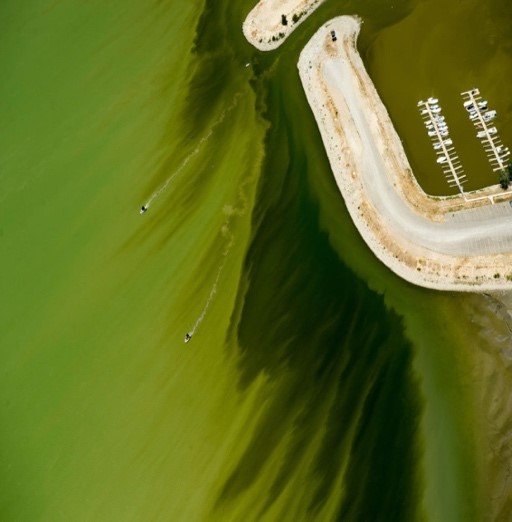
Harmful Algal Blooms (HABs) are caused by rapid growth or accumulation of naturally occurring organisms called cyanobacteria. Cyanobacteria are sometimes referred to as blue-green algae, but are actually a type of bacteria that has some algae-like characteristics. Cyanobacteria sometimes produce toxins that can impact drinking water, wildlife, or recreational use; this is why health departments issue warnings or closures on waterbodies when they are affected by HABs.Harmful Algal Blooms (HABs) are caused by rapid growth or accumulation of naturally occurring organisms called cyanobacteria. Cyanobacteria are sometimes referred to as blue-green algae, but are actually a type of bacteria that has some algae-like characteristics. Cyanobacteria sometimes produce toxins that can impact drinking water, wildlife, or recreational use; this is why health departments issue warnings or closures on waterbodies when they are affected by HABs.
There are a variety of factors that can contribute to the formation of HABs. Warm water, stagnant water, sufficient sunlight, and nutrients can all contribute to a bloom. Because of these factors, some waterbodies are more likely to be affected by HABs than others.
Utah Lake is a large, shallow waterbody that is warm in the summer and has high levels of nutrients. Therefore, it experiences HABs almost every summer. Sometimes the HABs on Utah Lake can be quite large, fortunately however, detected levels of toxins are typically low.
The Provo River watershed is different than Utah Lake. The reservoirs on the Provo River are deep, cold waterbodies that have very low levels of nutrients. Deer Creek, for example, likely does not have sufficient nutrients to support a large HAB. A driving factor to the lower nutrient levels in Deer Creek is the success of the Provo River Watershed Council (PRWC), of which the Central Utah Water Conservancy District (CUWCD) is a member. For the last 35 years, the PRWC has been working with landowners, as well as public and private entities to prevent nutrients and other contaminants from entering waterbodies in the Provo River watershed. For example, they have been involved in river restoration projects, worked with municipalities to eliminate municipal wastewater discharges, and have helped to implement agricultural best practices.
While great effort has gone into preventing large HABs in the Provo River watershed, cyanobacteria are still part of the natural environment, and it is not unusual for small HABs or accumulations of cyanobacteria to occur in Deer Creek and Jordanelle reservoirs in the late summer or early fall. These HABs can sometimes impact recreation in localized areas but have never posed a threat to the critical drinking water supply that comes from the Provo River. Still, CUWCD monitors these events very closely to ensure the safety of that drinking water supply. CUWCD has a responsibility and a strong commitment to water quality and will continue to monitor and extend effort and resources to protect the watershed and public health.